Hi Donnie,
You are correct, this will be a "hybrid". I wanted to go in this direction as I'm aware of my own limited knowledge and limited personal patience as it would relate to the work on 60+ individual frames and all of their related components. With that said PoB is the direction I will be going, if I go. I do want to build many internal components and structures of the ship and therefore will require internal decks to place them all on.
If you take a look at the upper left corner of the last image in my last post you can see the forward most bulkhead. One the template you can see, vaguely, 3 horizontal lines, the decks. The top deck is the faint dotted line, the middle is the black line and the bottom is the line with the black and red arrows pointing inboard. Once the hulls shell is completed and harden, everything above the bottom line of the bulkhead will be removed. That will be done for every one of the 16 bulkheads and form the support for the bottom deck. Those inboard arrows show where the bulkhead has already been precut to facilitate the easy removal of the top 2/3 of the bulkheads. I will glue the shell's planking to raw wood of the bulkheads below the bottom deck line, while applying a release agent to the bulkhead edges above the line, to ensure the first layer of the upper shell planking does not stick to the part of the bulkheads I intend to remove.
The "new top" of the bulkheads will form the support for the bottom deck. I will create the other supporting components off of that first deck, using plan's dimensions, deck beams, hanging knees supporting them, etc. As the decks will not be exposed from above, I will most likely not include certain deck components, ledges, carlings, etc. This will allow me to build an internal decks, internal structures, without having to build every single component. Perhaps a violation to the purists, but it will allow me to maintain focus on those structures I want to emphasize.
This methodology is not my brain child, but a method well known to a number of Russian Masters. It is called the "Scorlup" method. I first saw this and it was my inspiration from @KUDINANDREY's build log.
If a picture is worth 1,000 words, Andrey's video (one of many on his Le Fleuron build) is worth 1,000,000. To me at least. Thank you Andrey!!
You can see the video relevant to this method here;
If I decide to start this, I will be committed to its finish. This is why I'm being so deliberate in my preplanning. It would be a sizable commitment for me. And there is no doubt, I would not start this project if I didn't have the incredible support of our great SoS community. I will need a lot of help.
Cheers,
Ken



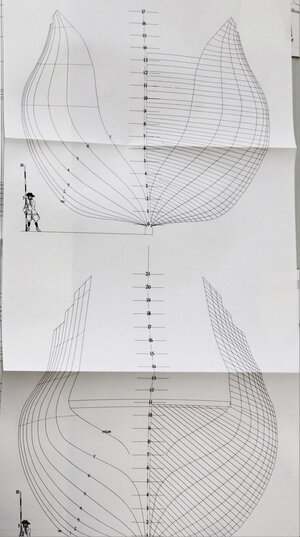
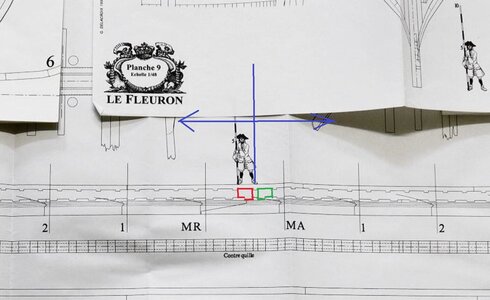
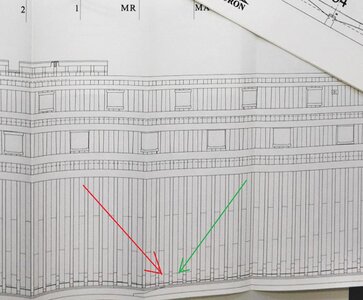
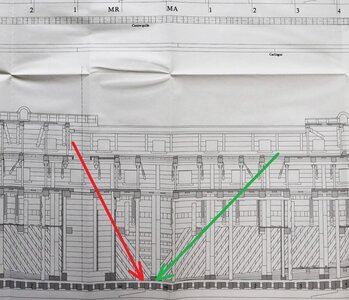
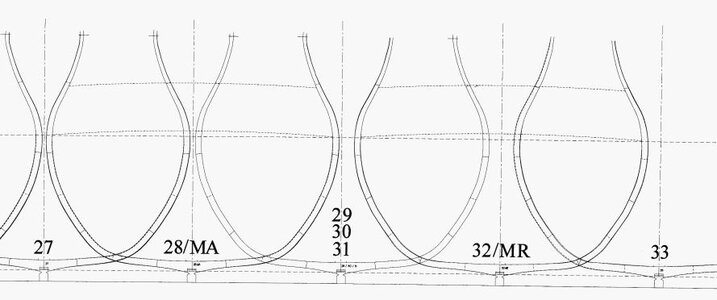


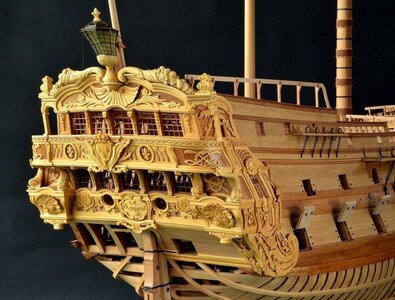


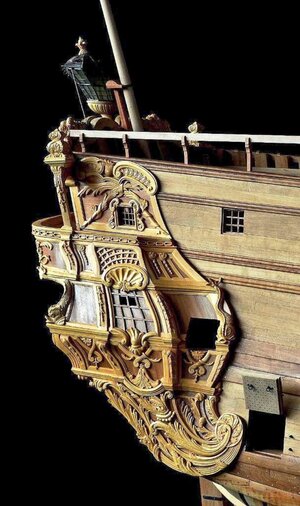
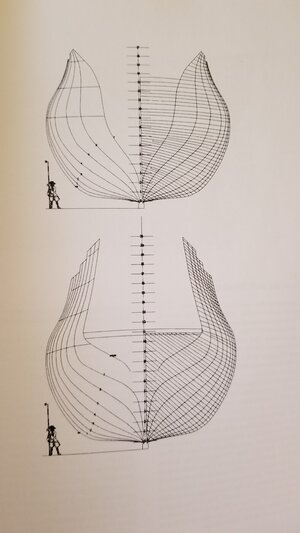
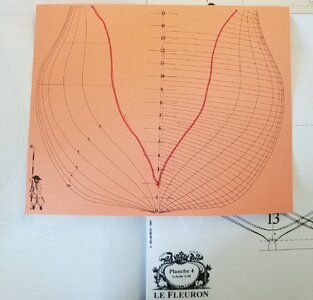
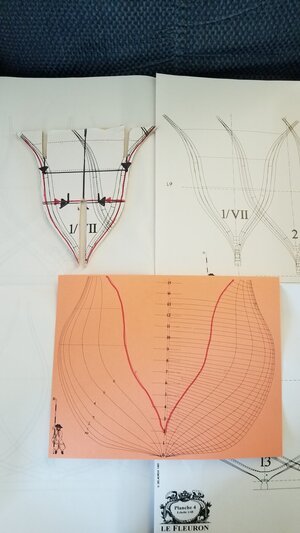
 Here is my question; using the frame drawing #7 as an example, what line am I cutting the bulkhead to the represent the outer most edge of the frame.
Here is my question; using the frame drawing #7 as an example, what line am I cutting the bulkhead to the represent the outer most edge of the frame.